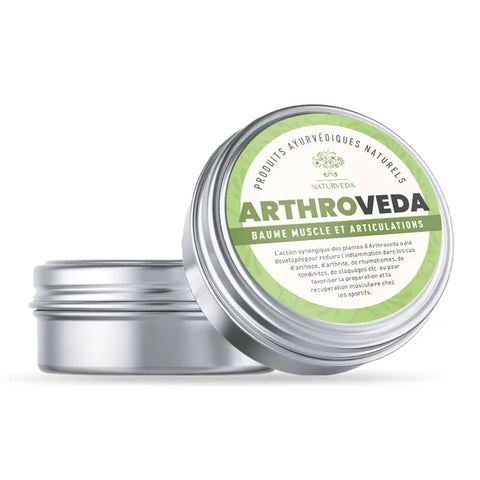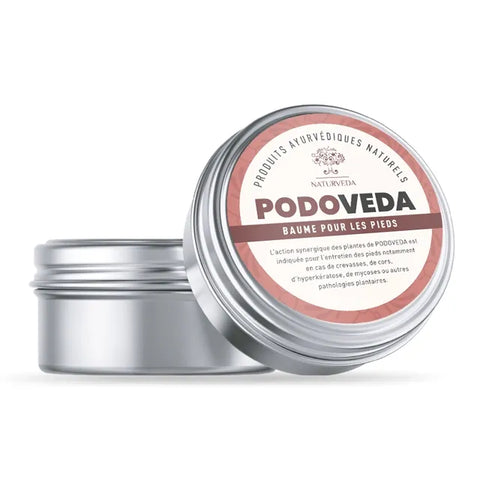3 products
Understanding Joint and Muscle Pain: Causes, Effects and Medicinal and Homeopathic Treatments
Joint and muscle pain are common forms of body pain that you usually feel in your bones, muscles, tendons, ligaments, or joints. These pains can range from mild to severe and can be temporary or chronic, affecting one or more parts of your body.
The factors that cause this pain can be due to various causes, including:
- Advanced age
- Sports injuries
- Tension and stress
- Chronic diseases such as arthritis or fibromyalgia
- Infections and autoimmune diseases
The treatment of these pains largely depends on their cause, but the use of both conventional and homeopathic medicines can help relieve them. Conventional medicines include painkillers, anti-inflammatories, and steroids, but they must be used judiciously to avoid side effects. On the other hand, homeopathic remedies depend on the “like cures like” approach, where a substance that causes symptoms in a healthy individual can also treat an individual with similar symptoms. Whether you choose one approach or the other, it is always safer to consult a healthcare professional for advice.
Now that you know a little more about joint and muscle pain, you are better equipped to understand these conditions and seek appropriate treatment if you suffer from them.
Surprising Effects of Joint and Muscle Pain on the Body
Joint and muscle pain may seem insignificant at first, but it has a surprising impact on your body. Not only does it limit your ability to perform daily tasks, but it can also have long-term consequences. The effects of this pain are not limited to mobility issues. It also has psychological effects on a person. Here they are in more detail:
- Sleep disturbance: Constant pain can make it difficult to find a comfortable position to sleep. People with chronic joint or muscle pain often experience signs of insomnia.
- Exhaustion: Due to lack of sleep and constant pain, people may feel constantly tired. This can affect their productivity and ability to complete daily tasks.
- Mood changes: Constant pain can lead to increased irritability. People with this pain may feel depressed or anxious.
These pains can also impact your long-term health if not treated properly, so it is essential to consult a healthcare professional as soon as the first symptoms appear.
In more severe cases, persistent, untreated pain can lead to partial or complete inability to move certain parts of the body. Avoidance of activity due to pain can also lead to muscle atrophy. It is therefore important to take any persistent joint or muscle pain seriously. Staying attentive to your body and what it is trying to tell you is the first step in maintaining good overall health.
How to Prevent Joint and Muscle Pain: Tips and Tricks
When it comes to joint and muscle pain, prevention is often the best cure. There are several ways to avoid suffering from these ailments, from simple lifestyle changes to dietary changes. So how can you prevent these aches and pains?
- The importance of a balanced diet: A balanced diet is essential to keep our bodies healthy, including our muscles and joints. Including foods rich in omega-3s, such as oily fish, flaxseeds and walnuts, can help reduce inflammation, a major cause of joint pain. At the same time, regular consumption of fruits and vegetables, which are rich in antioxidants, helps fight free radicals that can damage joints.
- Move regularly: It can be tempting to avoid physical activity when you have joint or muscle pain, but in reality, regular exercise can help reduce and prevent pain. Opt for low-impact exercises, such as swimming or yoga, which are gentle on your joints while strengthening the muscles that support them.
- Stress Management: Stress can negatively impact the health of our joints and muscles. When we are stressed, our bodies release hormones that can increase inflammation and muscle tension, leading to increased pain. Relaxation techniques, such as meditation and deep breathing, can help reduce stress and, in turn, prevent joint and muscle pain.
- Choosing the right shoes: Wearing ill-fitting or poor-quality shoes can put excess pressure on your joints, especially your knees and hips. Make sure you wear comfortable, well-fitting, and supportive shoes to help prevent joint and muscle pain.
In summary, preventing joint and muscle pain involves a healthy lifestyle that includes a balanced diet, regular physical activity, effective stress management, and choosing the right footwear. By taking these preventive measures, you can reduce your risk of developing this type of pain and improve your overall quality of life.
Comparison Between Medicinal and Homeopathic Treatment of Muscle and Joint Pain
Let’s continue our exploration of the treatments available for joint and muscle pain. And here, we’ll focus on comparing medicinal and homeopathic options.
Medicinal Treatment
THE Drug treatment is primarily used to reduce inflammation, which is often the cause of pain. Nonsteroidal anti-inflammatory drugs (NSAIDs) are commonly used for this purpose. However, these treatments can have side effects, including gastrointestinal upset.
Additionally, opioid painkillers are sometimes prescribed for severe pain. These powerful medications target the central nervous system to block pain signals. However, they carry risks of serious side effects and addiction.
In addition to these drug treatments, there are also more accessible and non-prescription solutions, such as topical creams. These creams, available in pharmacies, are often rich in anti-inflammatories and analgesics. They can be very effective in alleviating joint and muscle pain or relieving tendonitis . Their direct application to the painful area allows for a targeted and quickly noticeable action. For example, Tiger Balm , famous for its pain-relieving properties, is another effective option for relieving muscle and joint pain . Easy to apply, it offers rapid relief thanks to its anti-inflammatory and analgesic properties. On the other hand, for those looking for an Ayurvedic solution, Arthroveda , from the Naturveda laboratory, can be an interesting option. This is a natural balm, from the feet, muscles and joints range , designed to help reduce inflammation and relieve pain associated with joint problems. It provides a safe alternative to conventional medicine for those who prefer more natural healing methods.
However, it is recommended to consult a healthcare professional before starting a new treatment, even if it does not require a prescription. This ensures the best match between the product used and the type of pain felt.
Homeopathic Treatment
Homeopathic treatment, on the other hand, relies on a more holistic approach. This may include using herbal remedies to relieve pain, as well as lifestyle changes to prevent future pain. Examples may involve incorporating gentle exercise to strengthen muscles and improve joint flexibility, or changing diet to minimize inflammation.
It is important to mention that homeopathy advocates the idea that the body has the ability to heal itself. Homeopathic remedies are often diluted to a point where the active ingredient may not be easily detected, trusting the body to balance and correct underlying issues.
Ultimately, choosing between medicinal and homeopathic treatment is a personal decision based on your needs, preferences, and the advice of your healthcare professional. It is crucial to discuss all of your options with your doctor or pharmacist before starting a new treatment.
Current Research on Joint and Muscle Pain
Modern research into joint and muscle pain is constantly evolving. Scientists are continually seeking to improve our understanding of these complex conditions, with the ultimate goal of developing more effective and less invasive treatments.
At the forefront of research, fascinating discoveries are being made. For example, there is work on inflammation and its central role in both joint and muscle pain. Research indicates that inflammation can be caused by autoimmune factors as well as external influences such as diet or stress. This is key information that can guide treatment towards comprehensive and personalized approaches.
There is also a focus on developing new therapies. Researchers are exploring potential treatments such as gene therapy, cell manipulation and new forms of minimally invasive surgical procedures. These innovations have the potential to revolutionize the way joint and muscle pain is treated today.
In addition to treatments, research is strongly interested in the preventive aspect. How can we reduce the risk of developing these pains? Scientists are studying the role of diet, physical exercise and lifestyle in preventing joint and muscle pain.
It is clear that contemporary research on joint and muscle pain is dynamic and diverse. These advances are promising for all those affected by this pain. The future may bring more targeted, less invasive treatments and allow a better understanding of these health issues. Staying informed about the latest discoveries is essential to better understand and manage your own pain.
Medical Treatments for Joint and Muscle Pain: What Are Your Choices?
Joint and muscle pain can be a real burden, but fortunately there are medicinal solutions to alleviate this suffering. So let's talk about the choices available to you.
- Nonsteroidal Anti-Inflammatory Drugs (NSAIDs) : Nonsteroidal anti-inflammatory drugs, or NSAIDs, are commonly used to relieve pain and reduce inflammation caused by arthritis and other conditions. These include medications such as ibuprofen and naproxen. They are available as tablets, gels, and creams.
- Painkillers : Painkillers, such as acetaminophen, are often used to treat less severe joint and muscle pain. These medications may not reduce inflammation, but they are effective in reducing pain.
- Corticosteroids : These powerful medications reduce inflammation and suppress the immune system. They are typically used for more serious conditions where NSAIDs and painkillers are not effective. It should be noted that these medications can have serious side effects if used long-term.
- Capsaicin Medications : Capsaicin is a component of chili peppers that is used in creams and gels to relieve pain. It works by blocking pain messengers in the skin.
- Antidepressants : It may seem surprising to use antidepressants to treat pain. However, some antidepressants can help reduce pain because they affect how your body perceives pain.
Homeopathic Treatments for Joint and Muscle Pain: What Are Your Choices?
It is common to look for natural, non-invasive options to manage joint and muscle pain. Homeopathy offers a variety of remedies that specifically target these complaints. Here are some options you might consider:
- Rhus Toxicodendron : Commonly known as “poison ivy,” Rhus Toxicodendron is often used to relieve joint and muscle pain, especially if it is aggravated by damp, cold weather.
- Arnica Montana : Arnica Montana is frequently used in homeopathy to treat muscular pain and inflammation, particularly those due to physical exertion.
- Bryonia Alba : Often recommended for acute joint pain, Bryonia Alba is particularly effective when movement aggravates the pain.
- Hypericum Perforatum : Commonly known as St. John's Wort, Hypericum Perforatum is used in homeopathy to treat nerve pain and pain due to nerve injuries.
Even though homeopathic remedies are natural, it is important to consult a healthcare professional before starting a new treatment. Remember that each person is unique and a treatment that works for one person may not work for another.
This is why homeopathy is based on the principle of individualization. Treatment is personalized according to the specific symptoms and the general health of each individual. This holistic approach focuses on treating the underlying cause of pain rather than isolated symptoms.
Finally, while homeopathy can offer significant relief, it is always wise to consider it as one component of a larger treatment plan. A good diet, regular exercise, and adequate sleep are also essential to effectively manage joint and muscle pain.






